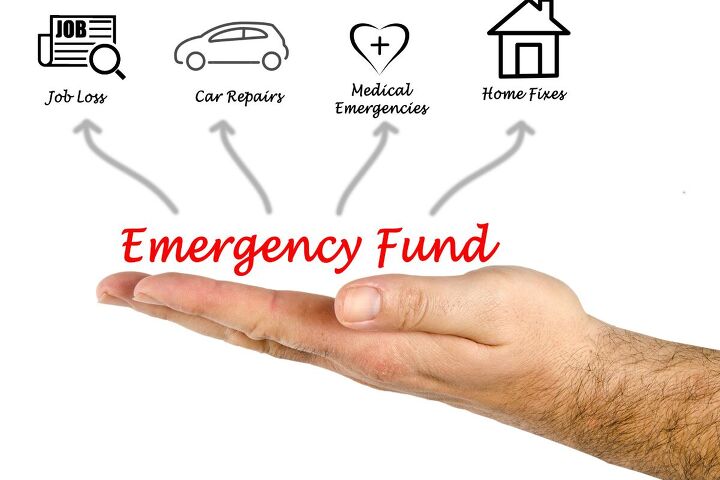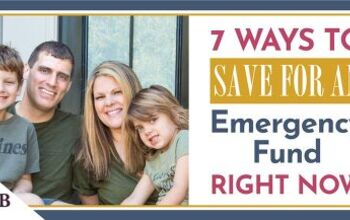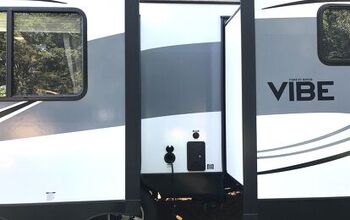How to Save Money for an Emergency Fund in 2023

I help women be intentional with their money; an essential part is learning how to save money for an emergency fund. So many of us want to save money, which is a good thing to do. One thing that stops us from saving money is we do not get clear and specific on what we are saving for.
When it comes to our savings, we should have multiple savings. I want to break down how you can create an emergency savings fund.
1. Define what the emergency fund can be used for
I believe that everyone should have an emergency fund. Emergencies are going to happen to all of us. We cannot prevent it, but we can prepare for it. My first tip is for you to define what your emergency fund can be used for.
For my clients and me, I like to define emergencies as life or death, fire, or extreme accident.
For example, if someone dies and I need to travel somewhere for a funeral, or someone close to me gets sick and I need to go to the hospital, or if I get sick and lose a considerable portion of my income, those are emergencies.
That is what the emergency fund is for. The emergency fund is not for when my sister called me and said she wants us to take a trip to Puerto Rico in two months, and my vacation fund only has $400, so I say I'm going to pull from my emergency savings. That is not an emergency.
Money flows where there is a purpose. There are to be emergencies that come up. I encourage you to define what your emergency fund can be used for so you don't find yourself pulling from it just because you didn't play well with the rest of your money.
2. Decide how much you want to put into your emergency fund
My next tip is to decide how much you want to put into your emergency fund for the next twelve months. What are you building up to? I want at least three months of living expenses for my life and my business in my emergency fund.
That means it's a big number that I want to get to. Let's use a nice round number of $15,000. My ultimate goal is $15,000 in my emergency fund. Maybe this year, I can only commit to putting $4,000 into my emergency fund. So for the next twelve months, my goal is to put $4,000 into my emergency fund.
The other way you can do it is you can say, no matter what, every paycheck, $25 goes into my emergency fund, and my goal is to get to that $15,000. So if I decide to take a portion of my tax refund, get a settlement of some sort, or get a bonus from work, I am going to build up until I get to that $15,000.
Once I get to $15,000, I can reassess my needs. While three months is great, we should get to six or twelve months. However, you want to have a starting point.
Maybe your goal is to get your first thousand dollars in your emergency fund. It doesn't matter the amount. It just matters that you decide on that amount, so you know what you are working towards.
3. Decide where you are putting the money
Where is your emergency fund going to be housed? I feel like a lot of us fall short of this tip. I suggest you get a separate savings account at another bank.
If your primary bank is Bank of America, open a savings account with Chase Bank or your local credit union. That way, when you make your emergency savings transfers, it's not being seen with the money you're working with every day.
If we see money, we might spend money. We need to do an excellent job of separating our emergency funds from our everyday money, so we don't get tempted to do a quick transfer.
If you don't want to save money in a bank, that's okay too. Do you want to do a cash envelope and have that stashed somewhere in your house? Do you want to save it in a mattress like Grandma's?
Just have a defined place for the money to go, preferably a secure bank account.
4. Save like it's a bill
I feel like this is also something that we missed the mark on. You need to save like it's a bill. You do not save after you spend. I teach my clients that savings are one of your main categories. We're going to pay our bills.
We're going to put money towards our expenses, we're going to save for our sinking funds, and we're going to put our savings down like a bill.
So just like you pay your rent, your mortgage, your car payment, and your car insurance, you need to pay yourself savings. I do a bare minimum threshold. My bare minimum is $100 a month for my emergency savings.
I believe that everyone should have an emergency fund. That's why having a budget is so important. Once you have a clear money plan, you can see how much you have to put in savings or if you're going to cut back on eating out so that you can put $75 a month into emergency savings. It's non-negotiable. It's not an option to not save.
Have a clear definition of your emergency savings and build up to that goal. The more you make, the more you save. If you start a side hustle, decide that x amount of money that you make from your side hustle is going into your emergency savings and save like a bill.
How to save money for an emergency fund
I hope these tips helped you learn how to save money for an emergency fund. What strategies do you use to build your emergency fund? Share your tips in the comments below.





















Comments
Join the conversation